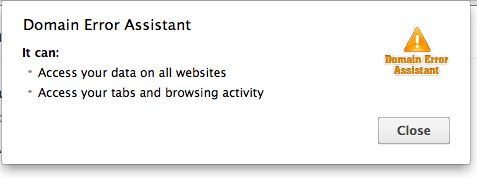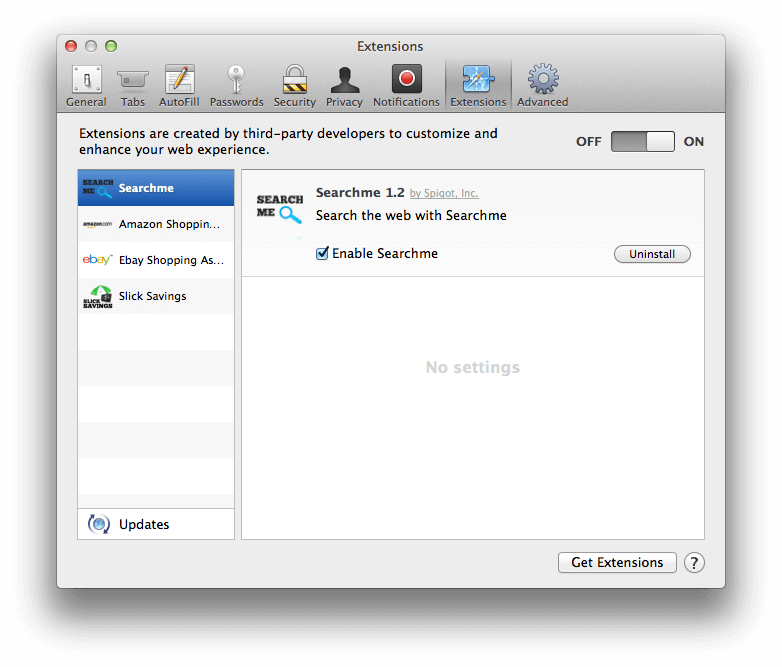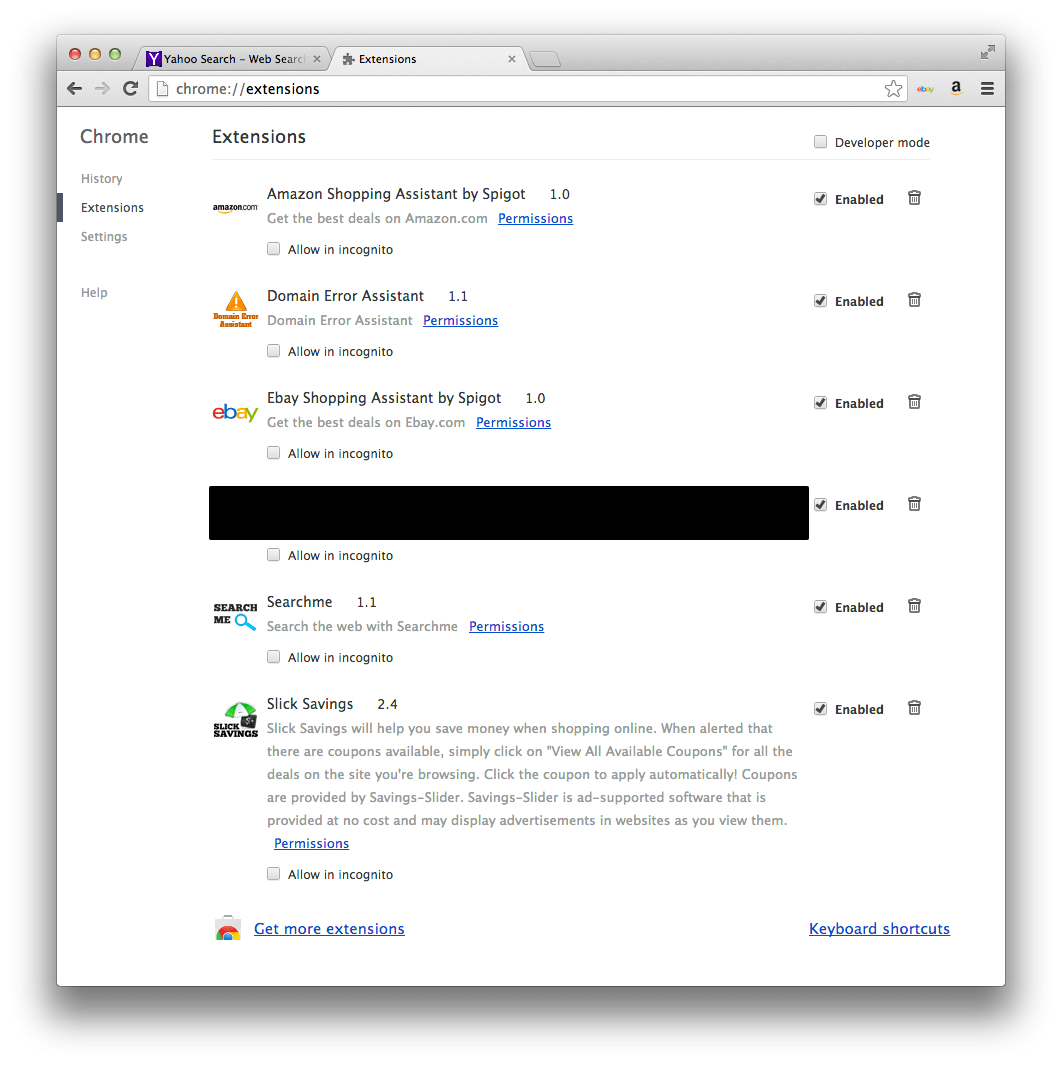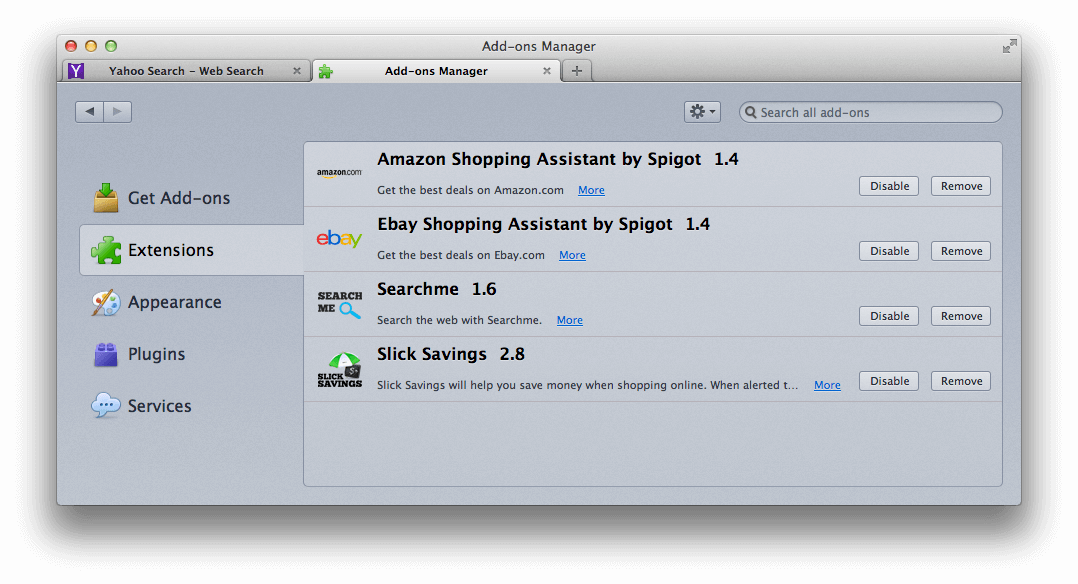CNet Adware Identification and Removal Guide for Mac OS X
The links for many popular Mac apps on CNET’s download.com have been replaced with a “CNET installer” that installs toolbar adware and changes browser settings. This guide shows how to identify affected apps, how to avoid the toolbar installer, how to determine if it has been installed on your system, and how to remove it if so.
Adware can be a threat to user privacy, and is used to track a user’s browsing habits online. For example, the permissions for one of the Google Chrome extensions shows what these toolbars can access:

How to identify affected apps
- To determine if a specific app is affected, go to the CNET download.com page for that app. If you see “CNET installer Enabled” listed on the “Download Now” button, it means that the app is affected and will download the toolbar installer if you click that button.

- If you see “CNET Secure Download” listed on the “Download Now” button, it means that the app is not affected, and will download correctly if you click that button.
How to avoid the toolbar installer
- If the app you are trying to download has “CNET installer Enabled” listed on the “Download Now” button, there should be a link below the button listed as “Direct Download Link.” Clicking the direct download link will download the app, and not the toolbar installer.
- Alternatively, you can generally download the app directly from the developer’s website by clicking “See full specifications” in the sidebar on the left side of the CNET download.com page for the app, then following the link listed for “Publisher web site.”
- The easiest way to avoid adware installers like this is to only download software through the Mac App Store, or directly from the developer’s website.
Determining if the toolbars have been installed on your system
There are a number of things that will change for your web browser if the toolbars have been installed on your system. First, the home page and default search engine will both be changed to Yahoo. Additionally, various icons will be added to your browser’s toolbar. For example, on Safari the toolbar appears like this:

Removing the toolbars from your system
The first step is to remove the toolbar extensions for your browser:
Safari Users
- In Safari, click the Safari menu, then click Preferences.
- On the Preferences screen, click the Extensions tab.
- Click the “Uninstall” button for the Searchme, Amazon Shopping Assistant, Ebay Shopping Assistant, and Slick Savings extensions.

Chrome Users
- In Chrome, click the Window menu, then click Extensions.
- On the Extensions screen, click the trash icon next to the Amazon Shopping Assistant, Domain Error Assistant, Ebay Shopping Assistant, Searchme, and Slick Savings extensions to remove them.

Firefox Users
- In Firefox, click the Tools menu, then click Add-ons.
- Click the Extensions tab in the Add-ons Manager.
- Click the remove button for the Amazon Shopping Assistant, Ebay Shopping Assistant, Searchme, and Slick Savings extensions.

The next step is to reset your homepage and default search engine for your browser:
Safari Users
- In Safari, click the Safari menu, then click Preferences.
- On the Preferences screen, click the General tab.
- Select your favorite search engine from the menu next to “Default search engine,” and enter a website for your Homepage.
Chrome Users
- In Chrome, click the Chrome menu, then click Preferences.
- On the Chrome Settings page that appears, choose your favorite search engine from the list under the “Search” section. To change your home page, go to the “On startup” section, and click “Set pages” next to “Open a specific page or set of pages.” Delete the startup page beginning with http://search.yahoo.com/?fr=spigot-yhp-gcmac… by clicking the X button next to it. Enter a URL for the home page you would like to set, and click the OK button.
Firefox Users
- In Firefox, click the small downward pointing triangle icon in the search bar, then select your favorite search engine from the drop down menu.
- Then, click the Firefox menu and click Preferences.
- On the Preferences screen that appears, click the General tab, and enter a URL for the home page that you would like to set.



